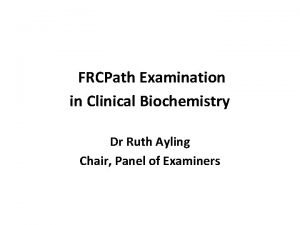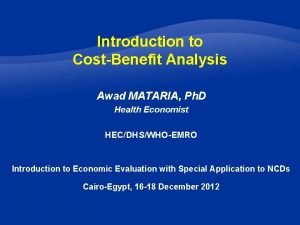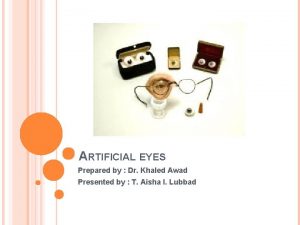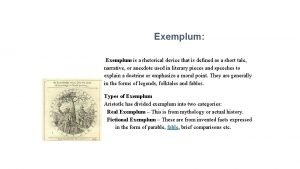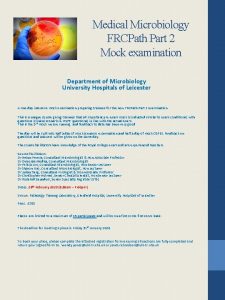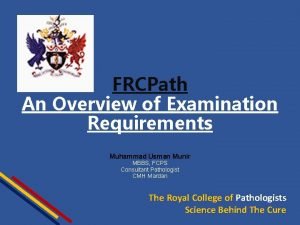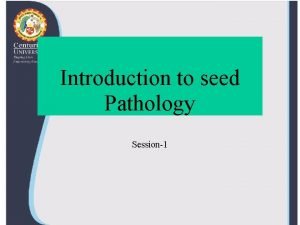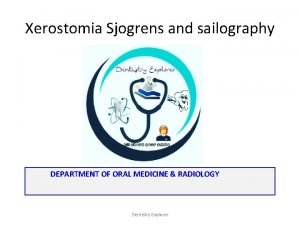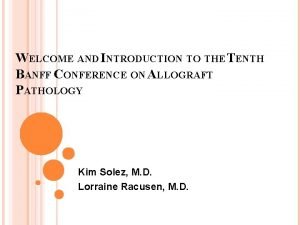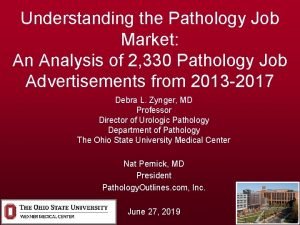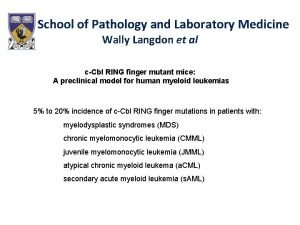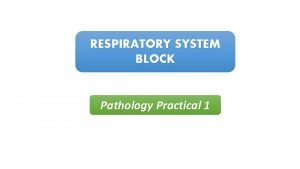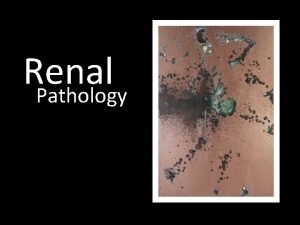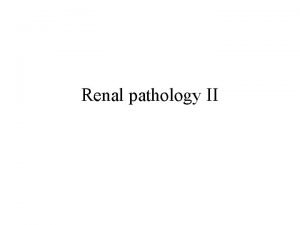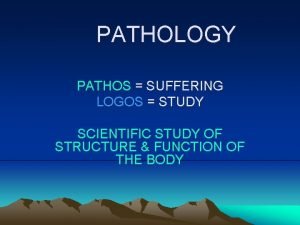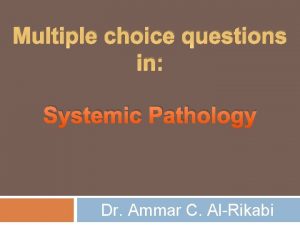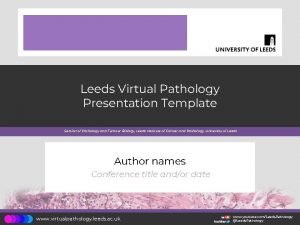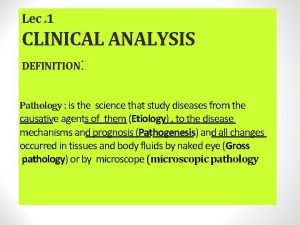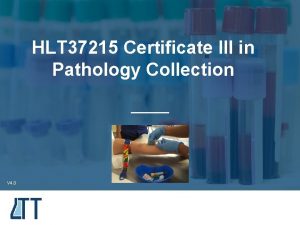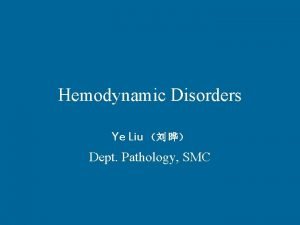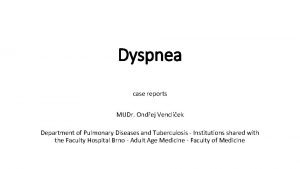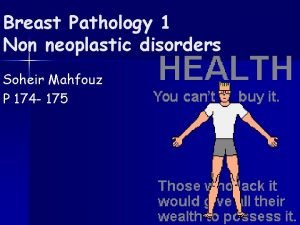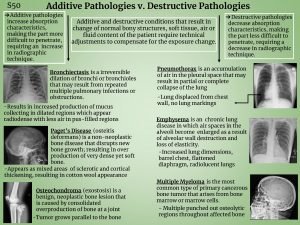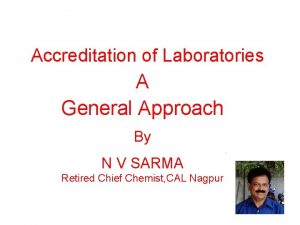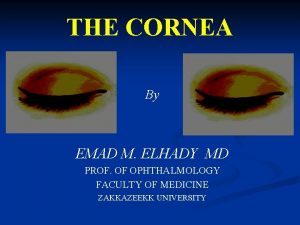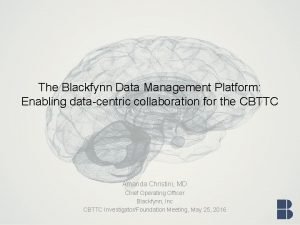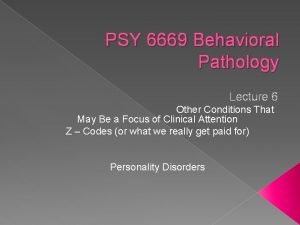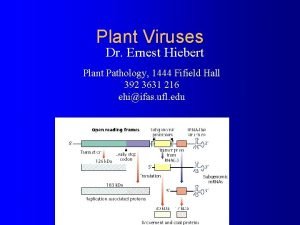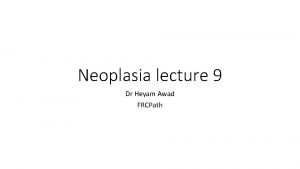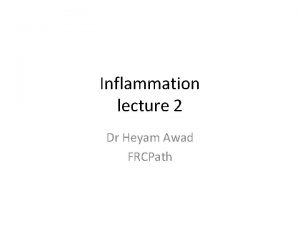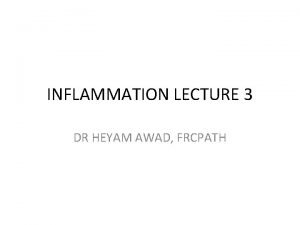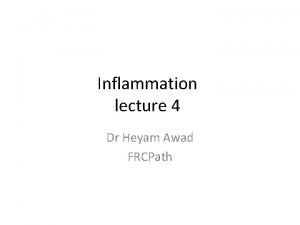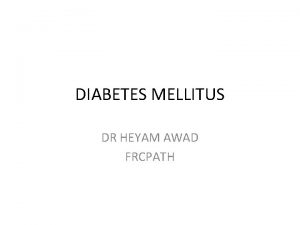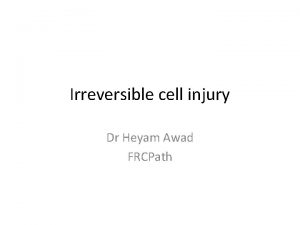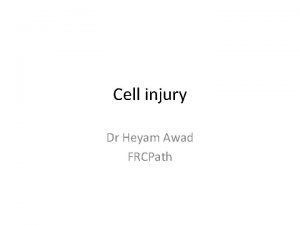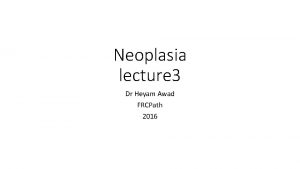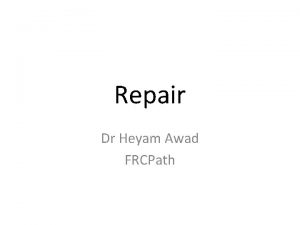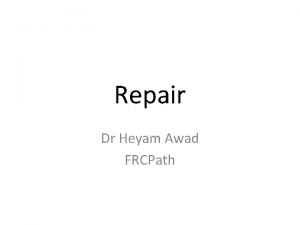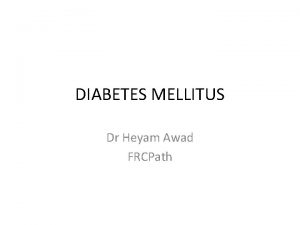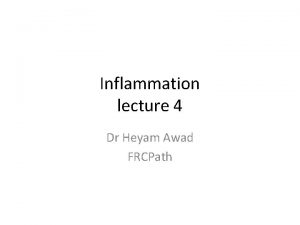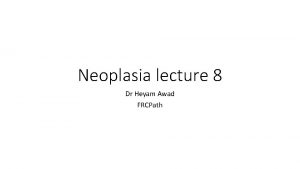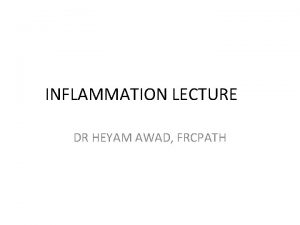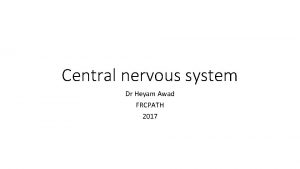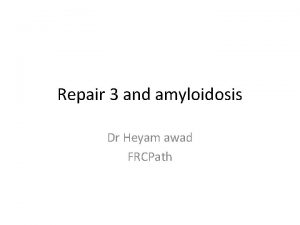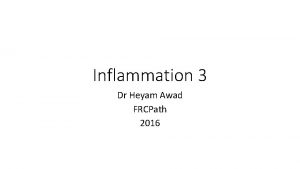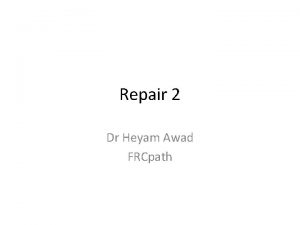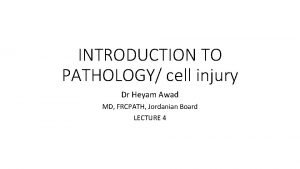INTRODUCTION TO PATHOLOGY Dr Heyam Awad MD FRCPATH





































- Slides: 37

INTRODUCTION TO PATHOLOGY Dr Heyam Awad MD, FRCPATH, Jordanian Board LECTURE 1

Introduction to pathology

Today’s lecture • Introduction aiming at: 1. Introducing you to the course. 2. What is pathology ? 3. What do pathologists do?

The course • Two credit hours course • Three main subjects will be covered: 1. Cell injury 2. Inflammation 3. Neoplasia

reference - Robbins basic pathology, Kumar Abbas and Aster, 10 th edition. - My slides are a summary of the book!

Course design! topic instructor No of lectures Book chapter Cell injury Dr Heyam Awad 5 1 Inflammation and repair Dr Mousa Abbadi 10 2 neoplasia Dr Maha shomaf 10 5

My lectures • Two sets of slides: • 1. A detailed one which you need to study from This will be on my web page and on the e learning site before the lecture day. 2. A FUN version that includes mainly pictures. . This will aid us discussing the subject Do we need sheets? . . How to study?

assessment *Mid term. . 40 marks. . Around week 7 material: cell injury and inflammation *Final exam. . 50 marks material: repair and neoplasia *Attendance marks. . 10 please note: school of medicine is strict about attendance. .

The best way to deal with my lectures! • 1. attend the lectures and try to understand • 2. read the slides carefully. . They are detailed. . I put everything you need for the exam there • 3. I encourage you to read the book: chapter 1 • 4. keep checking the e-learning, I’ll put resources and sample questions there. • KEEP CALM AND ENJOY


MY RULES!!! • First: your rights • To be respected • To enjoy each 50 minutes here • To understand • And: please ask questions. . Give comments. . And challenge me!

Remember:

Lecture RULES: your duty! • Give me your full attention!

What about coffee?

Contact details • Office hours: 2 -3 daily • My office is in the hospital, third floor • You can also see me outside the office hours, if I’m not in the office I’ll be in the histopathology department in the same floor(third) • E mail: h_awad@ju. edu. jo • : heyamawad 2000@yahoo. com • Also: keep checking e learning for announcements.

What is pathology? • Patho = disease • Logy = study • So pathology is the study of disease = ﻋﻠﻢ ﺍﻻﻣﺮﺍﺽ

Pathology studies three main aspects of the disease process: • Etiology • Pathogenesis • morphology

Etiology. . The “why” question • = the origin of disease= the underlying cause.

Pathogenesis. . “HOW” • Steps in the development of disease. • Describes how etiologic factors trigger cellular and molecular changes that give rise to functional and structural abnormalities. • Disease occur in a multistep organized fashion. .

pathogenesis • Message: as a doctor you need critical thinking, splitting things into precise steps and stages

morphology • The changes seen on tissues and organs that help diagnosing the disease • Gross= macroscopic morphology: changes seen by naked eye • Microscopic morphology: changes seen under the microscope.

Gross morphology. . Can you describe ?


morphology

Histopathology is fun. .

What do pathologists do?

Sample obtained. . how

Sample received in lab

HOW DOES THESE SAMPLES CHANGE INTO GLASS SLIDES? ? ?


Grossing = cutting the sample

Processing to a paraffin block

Cutting. . By a microtome

Staining the slide

Ready to be read by the pathologist

The pathology report • We convey what we see under the microscope in a written report. • The report includes macroscopic ( gross) and microscopic description. • It gives you information about: the diagnosis, the prognosis and probably the underlying cause.

 Frcpath clinical biochemistry
Frcpath clinical biochemistry Awad mataria
Awad mataria Dr khaled awad
Dr khaled awad Exemplum rhetorical device
Exemplum rhetorical device Frcpath part 1 microbiology
Frcpath part 1 microbiology Mydetas
Mydetas Introduction and importance of seed pathology
Introduction and importance of seed pathology Sailography
Sailography Seed pathology definition
Seed pathology definition Banff pathology course
Banff pathology course Job market for pathologists
Job market for pathologists Pathology outline
Pathology outline Diagnostic report sample
Diagnostic report sample Rph pathology
Rph pathology Copd lungs images
Copd lungs images Benign nephrosclerosis pathology outlines
Benign nephrosclerosis pathology outlines Grawitz tumor
Grawitz tumor Pathos pathology
Pathos pathology Systemic pathology exam questions
Systemic pathology exam questions Leeds uk virtual slides
Leeds uk virtual slides Definition of clinical pathology
Definition of clinical pathology Pathology branches
Pathology branches Hltpat001
Hltpat001 Mural thrombus
Mural thrombus Thyroiditis
Thyroiditis What pathology
What pathology Highest clouds
Highest clouds Chapter 17 oral pathology short answer questions
Chapter 17 oral pathology short answer questions Fibrocystic breast pathology
Fibrocystic breast pathology Pathophysiology definition
Pathophysiology definition Additive pathology in radiography examples
Additive pathology in radiography examples Nabl assessor list
Nabl assessor list Interlocking pathology
Interlocking pathology Chrystalla ferrier
Chrystalla ferrier Corneal nebulae
Corneal nebulae Data-centric pathology
Data-centric pathology Behavioral pathology
Behavioral pathology Plant pathology
Plant pathology
